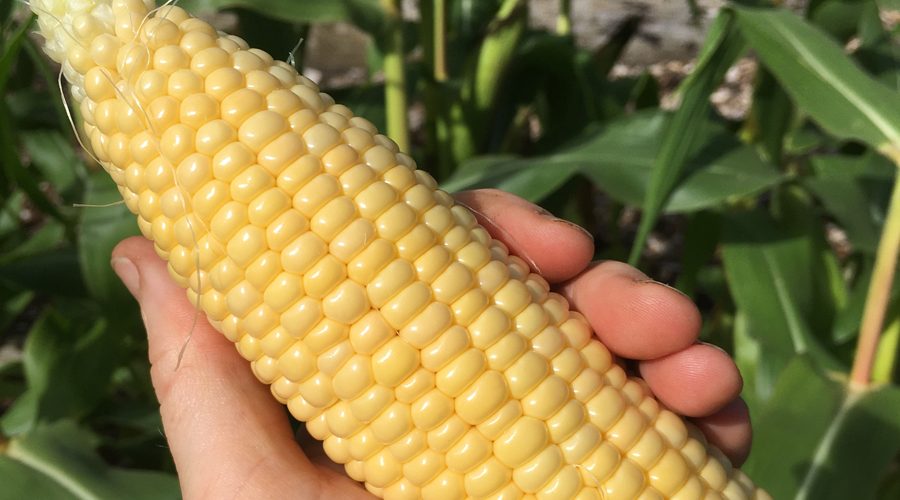There is nothing more joyous than eating your own homegrown sweetcorn. It is SO much sweeter and tastier than shop-bought corn. Having said that, it can be incredibly disappointing when the corn doesn’t grow properly, so here’s everything you need to know for a successful crop of corn-on-the-cob sweetcorn:
Planting your sweetcorn:
Sweetcorn is best grown in a nice, warm, sunny spot. Rather than planting in a single row, it is better to plant in grids. Since sweetcorn relies on wind pollination rather than insects this helps to improve the chances of good pollination. If you’ve grown peculiar looking cobs before with just a few plump kernels then it’s most likely that they didn’t get pollinated very successfully. By planting them in blocks or grids (i.e in 3 rows of 3 rather than a single row of 9) then you should get a much better rate of pollination. Leave 30cm between each plant.
Sweetcorn is not frost tolerant, so if it’s still chilly at night in your area, it will be better to plant your seedlings temporarily in a pot and keep them under cover, or if you can’t do that then loosely plant them in a growbag somewhere sheltered. Then plant them out in a few weeks when it’s warmed up properly.
Caring for your sweetcorn:
In the early days your sweetcorn plants will need to be kept well watered (yellow/brown leaves is a sign that they don’t have enough water and nutrients) and they will also need protection from slugs. If the leaves start to look a bit shredded this is probably due to slugs (they don’t eat the tougher ribs in the leaves so the damage does not look quite so slug like!)
As your plants mature and get a bit taller, it is a good idea to earth them up by bringing some soil in and around the base (like a molehill) to give them a bit of support on windy days. Other than that, they are fairly self reliant! Just keep them weed free and well watered during dry spells.
Harvesting your sweetcorn:
Wait until the tassels on the end of the cobs turns black in autumn. Then, gently peel back the outer leaves of one cob, just a little, to reveal a few corn kernels inside. Press a thumbnail into a kernel and look to see what colour the juice is. If it’s clear, they need a little longer. If it’s milky, they’re good to go! Simply tear the cobs off by pulling them downwards. They really are best eaten fresh, so don’t pick them until you’re ready to cook them – you’ll really notice the difference in flavour!

